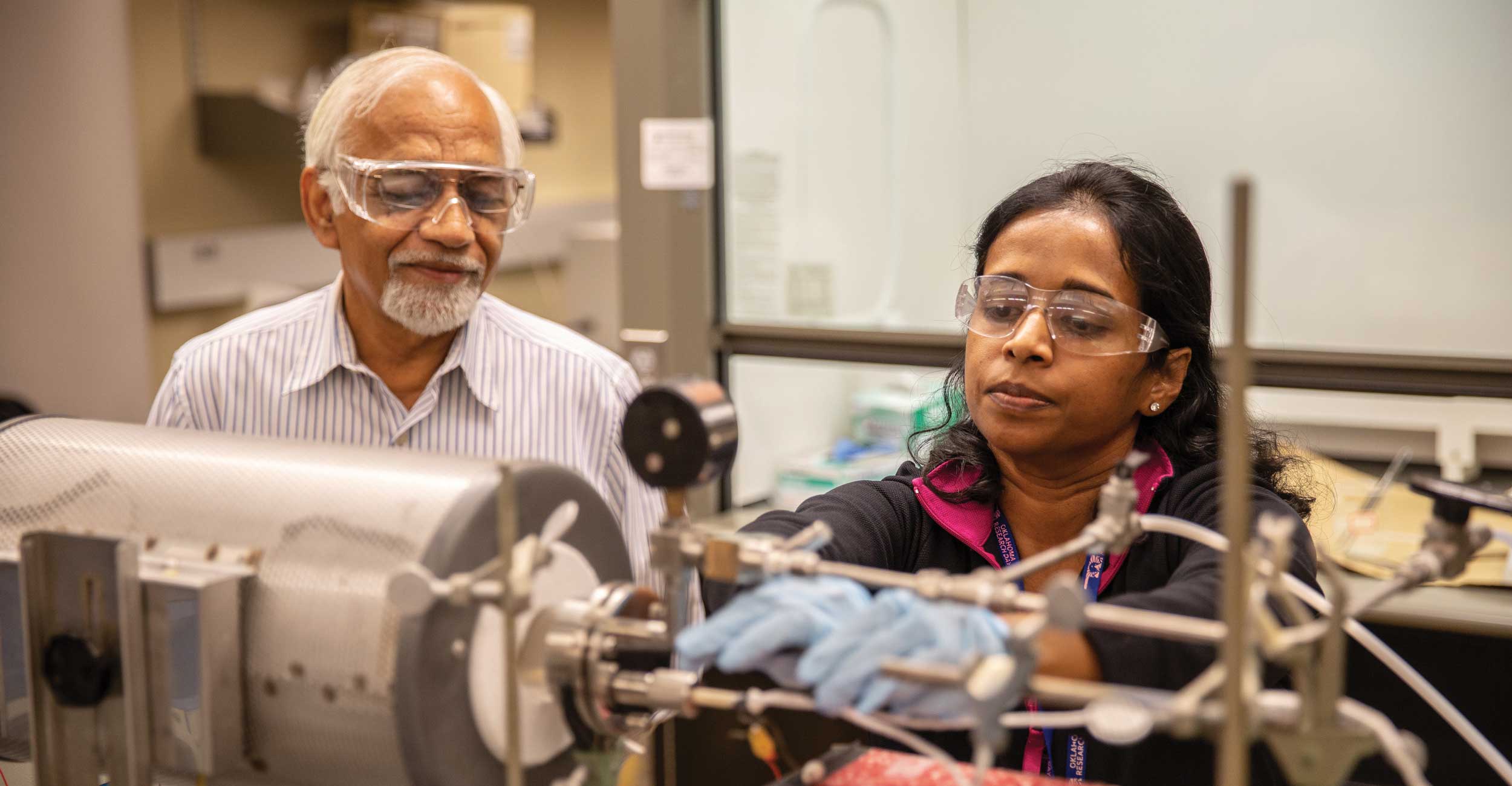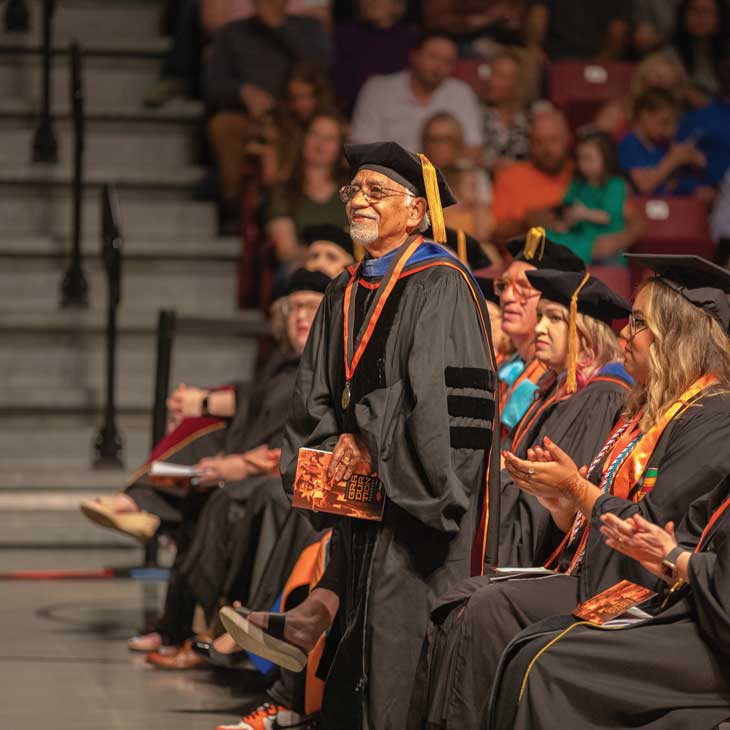
Singh garners national recognition for groundbreaking career
Tuesday, October 8, 2024
Media Contact: Sydney Trainor | Communications and Media Relations Specialist | 405-744-9782 | sydney.trainor@okstate.edu

A Regents Professor at Oklahoma State University’s College of Engineering, Architecture and Technology, Dr. Raj Singh’s continued dedication and advancements to the field of materials science engineering were greatly acknowledged this year.
Singh received the American Ceramic Society’s 2023 Rishi Raj Medal for Innovation and Commercialization in Ceramics. He was elected to the rank of American Association for the Advancement of Science Fellow and became a member of the National Academy of Engineering.
Singh’s groundbreaking invention and his incredible talent for inventing new materials and their innovative processing led to his election as a member of the NAE.
“It is most exciting and professionally satisfying to be elected as a member of the NAE,” Singh said. “It is the highest distinction and recognition that an engineer can achieve and is recognized as such worldwide.”
The NAE is a private, independent, nonprofit institution that provides engineering leadership in service to the nation and is comprised of over 2,000 members who are among the world’s most accomplished engineers. Members are peer-elected and include international, senior professionals in business, academic and government officials. The NAE provides leadership and expertise for numerous projects focused on the relationships between engineering, technology and quality of life.
Singh, a world expert on ceramic matrix composites (CMCs), has demonstrated an innate ability to invent new materials and their novel processing. He has made seminal and transformative scientific and technological contributions to the field of CMCs and their applications in jet engines — a true pioneer.
Advancing science and industry
His trailblazing work on melt-infiltration (MI) process technology for making fully dense, net-shape and damage-tolerant silicon carbide fiber-reinforced CMCs has been an industry game-changer.
This unique and inherently simple MI process has led to its widespread use and commercialization by GE-Aviation since 2016. It has accumulated over 20 million flight hours in Leading Edge Aviation Propulsion engines for Airbus, Boeing 737 and 777, and COMAC aircraft.
Singh’s inventions have not only helped reduce weight and enhance engine efficiency but also offer societal benefits through reduced CO2/NOx emissions, creating multibillion-dollar businesses in the process.
“His technologies, wrought from a creative and meticulous research, have been adopted in commercial products that are used in vehicles from NASA, Boeing, Airbus, and the Japanese and U.S. governments,” said Dr. Jim Smay, professor and head for the School of Materials Science and Engineering. “His depth and breadth of impact is unparalleled on the OSU-Tulsa campus.”
Dr. John Veenstra, previous interim dean of CEAT, said Singh’s election to NAE is among the highest recognitions an engineer can receive.
“It is a clear recognition by his peers of his significant contributions to the profession,” Veenstra said. “He is a tremendous asset to CEAT and reflects the quality of CEAT faculty by having such a preeminent scholar in its ranks. A career of demonstrated sustained excellence is the hallmark of NAE members, and Dr. Singh’s academic record is unmistakable evidence of this trait.”
Lasting impact
Singh said the best part of his job is to help educate the best possible engineers and impart his knowledge of the discipline of materials science and engineering.
“I want to encourage students in the engineering field to be curious, persevering, creative, inventive and passionate about their field,” he said. “Ultimately, use your knowledge and skills to create new materials and products to benefit society, the nation and the world. Never forget to be curious and inventive. It should be a lifelong pursuit.”
Singh has made tremendous scientific and technological contributions through his 350 research articles, 27 granted patents and books in the fields of CMCs, diamond films, boron nitride nanotubes, electrolyte retainer for molten carbonate fuel cell, electrolyte for Na-S batteries, self-healing glass seals and electrolyte and electrodes for solid oxide fuel cell and ferroelectric ceramics displaying large (0.8%) strain.
“I want to encourage students in the engineering field to be curious, persevering,
creative, inventive and passionate about their field.”
Smay notes that it is difficult to count all of the impacts that Singh’s research has had but said that his work in the field puts him at the top of both the academic/basic science wing of materials science through the significant contributions they have made to commercial applications.
“Singh was the founding department head of MSE at OSU-Tulsa and built the department to the point where it now performs over $1 million per year at the Helmerich Research Center,” Smay said. “He has collaborators all over the world, and his graduates have carried his legacy throughout academia and industry.”
Photos By: Josh New
Story By: Desa James | Research Matters Magazine
